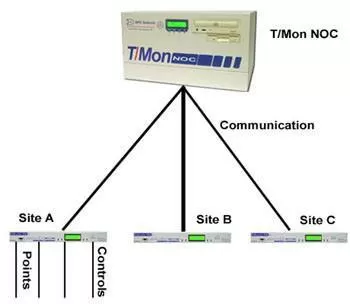Download our free SCADA tutorial.
An introduction to SCADA from your own perspective.
1-800-693-0351
Have a specific question? Ask our team of expert engineers and get a specific answer!
Sign up for the next DPS Factory Training!

Whether you're new to our equipment or you've used it for years, DPS factory training is the best way to get more from your monitoring.
Reserve Your Seat TodayTelecom SCADA integration is the process of integrating SCADA capabilities into a telecom system, such as a network alarm monitoring system.

You Must Deploy a Master That Supports Both Telecom and SCADA Protocols
The process of telecom SCADA integration can only occur when you have a master that supports both telecom and SCADA protocols. To allow for telecom SCADA integration within your network, you must find a master that can support SCADA in addition to telecom protocols.
Advanced monitoring platforms support many different communication protocols through a single master, allowing for complete telecom SCADA integration. Integrating alarms from these devices of varying protocols allows you to easily view all of your alarms on a single screen.
T/Mon NOC Supports Over 25 Protocols
The DPS T/Mon NOC is one such example of an advanced monitoring master. T/Mon supports over 25 protocols, including SNMP, DNP3, TL1, ASCII, and more. This advanced telecom SCADA integration solution provides for the most effective network monitoring by accepting alarm inputs from all of your devices of varying protocols. T/Mon also supports legacy equipment and proprietary protocols from other manufacturers, allowing you to develop a cost-effective monitoring system without having to purchase all-new devices.
T/Mon Allows You to Achieve a Successful Telecom SCADA Integration
T/Mon provides you with the best technology for a successful telecom SCADA integration. In addition to multi-protocol support, T/Mon provides automatic pager or email notifications of alarms, enabling network technicians to be instantly informed of a network problem no matter where they are. These plain-English alarms detail the specifics of problems, while user-defined text messages provide specific instructions for correcting network threats.